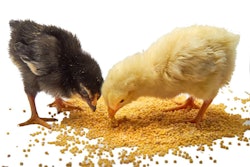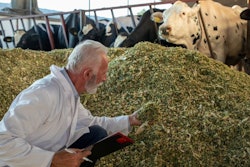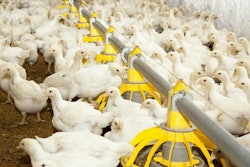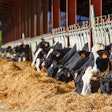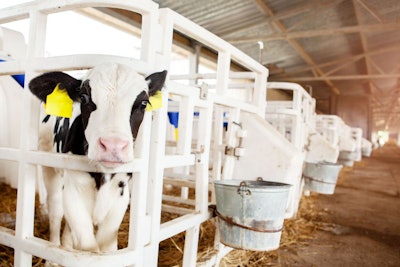
Why are skim milk-based replacers thought to be superior when whey-based products can perform as well or better?
Milk replacers for calves are based on dairy products because the digestive physiology of pre-weaned calves is geared towards handling only milk in their stomach – at least during the first few weeks before their rumen starts becoming functional.
The two major dairy products used in commercial calf milk replacers today are skim milk and sweet whey. Due to their price discrepancy, milk replacers based on skim milk are invariably more expensive and they are marketed as being of superior quality or supporting better performance. But commercial experience has demonstrated that whey-based milk replacers can perform equally or better than some skim milk-based products.
So, what is the reason behind this controversy? Here, we will try to shed some light on this topic by explaining some simple facts.
Skim milk
When butter is removed from milk, the remaining liquid is dried and sold as skim milk. Basically, it contains all milk solid minus the fat, so the proteins in skim milk have the same profile as those in whole milk. These proteins fall under two broad categories: caseins and wheys. The first are highly digestible and, so far, with minor possible exceptions, the general understanding is that their role is to provide the young calf with amino acids. Thus, they are the primary protein source for calves. Wheys include a wide array of immunoglobulins that are required by the animal to boost its immune system at the gut level. These immunoglobulins are more resistant than caseins to digestion and are expected to have a few points of digestibility lower than casein proteins – all other variables being equal.
Whey
Whey is the remaining liquid after cheese is made from whole milk. In practical terms, it contains everything but casein, fat and calcium that precipitate by the action of renin during cheese making. The dried product is expected to be rich in whey proteins and immunoglobulins. Further commercial products can be extracted from whey, such as de-lactosed or de-mineralized whey and whey protein concentrates. Each step involves the removal of one or more components by further processing. Here it should be noted that whey proteins, once digested, offer a very a similar – but not the same – array of amino acids of equal value to the animal after absorption.
The drying process
In order to go from a liquid to a dry product, some form of artificial drying method is employed. Exposure of any protein-containing product to high temperatures for long periods results in reduced protein digestibility. This is due to the Maillard reaction as lactose interacts with amino acids, rendering them completely non-digestible by the animal (but still usable by the microbiota in the large intestine). This is commonly known as the browning reaction because the final product is usually brownish in color (the same reaction that causes the browning of bread crust.) To minimize this negative reaction, liquid products can be dried at low(er) temperatures (increased cost) or freeze-dried (even more expensive, but causes no protein damage as no heat is involved. This is not a problem unique to milk products. The same issue exists in fishmeal, where low-temperature dried products are sold at a premium due to their superior digestibility and palatability.
Quality remains key
From the discussion so far, it is evident that a badly dried casein will invariably have lower digestibility (and palatability if overheated to the point bitter substances form) from a whey product that has been dried at lower temperatures to preserve its quality. If a milk replacer based on low-quality casein (to keep commercial costs reasonable) is used, then it will suffer in comparison to a high-quality whey-based milk replacer. Such comparisons are rather common under commercial conditions and continue to baffle calf producers, veterinarians and nutritionists alike as none can easily discern the quality of raw materials used in each product.
Non-milk raw materials
Milk replacers are expensive products, and those based on skim milk alone can be very expensive if casein is of top quality. In some cases, manufacturers will add a vegetable protein source (of good quality, otherwise calves will suffer from profuse diarrheas) and even fill up formulas with starch or even wheat flour (to thicken up the reconstituted milk as this impresses some workers – but it is often detrimental to calf health). A skim milk-based product may contain other ingredients that are difficult to digest, further impairing animal health and performance if such ingredients are of questionable quality. This again can create a discrepancy between different milk replacers. Nothing prevents a manufacturer from adding such vegetable raw materials in whey-based milk replacers to satisfy the market demand for low-cost milk replacers, but this is another conversation.
Unbalanced formulas
As mentioned above, skim milk and whey have different amino acid profiles. Yet, most milk replacer formulas are formulated based on crude protein (usually around 20%). In contrast, calves require an exact amount of each amino acid from their milk in order to satisfy their needs – at least until their rumen is fully functional. Failing to account for these differences in amino acid profile can also be a reason why two milk replacer products based on skim milk versus whey can cause different animal reactions. Accounting for the slightly lower digestibility of some amino acids in whey can easily resolve one potential problem.
Personal preferences
All milk replacer formulas for calves that I have designed are based on a blend of skim milk and whey. I do not prefer further processed dairy products, and I always insist on personally testing the skim milk and whey – or have someone do it for me at the feed plant. I prefer to buy a more from a more expensive supplier if I can guarantee higher quality as this ensures my goal: high palatability, high digestibility and rapid growth performance. In my view, money spent on a good milk replacer is an investment, not an expense.
The differentiation of calf milk replacers based on the type of milk product used is simplistic and offers no real advantages other than outdated misconceptions due to old marketing methods. Ingredient quality is much more important than type, and any experienced nutritionist can balance a high-quality whey-based milk replacer to perform equally to a skim milk-based milk replacer. Differences in lactose, fat, minerals, additives and raw materials of vegetable origin also need to be taken into account when comparing commercial products. At the end, a good product will likely be more expensive, but that does not mean a low-quality product is always offered at cost saving prices.


